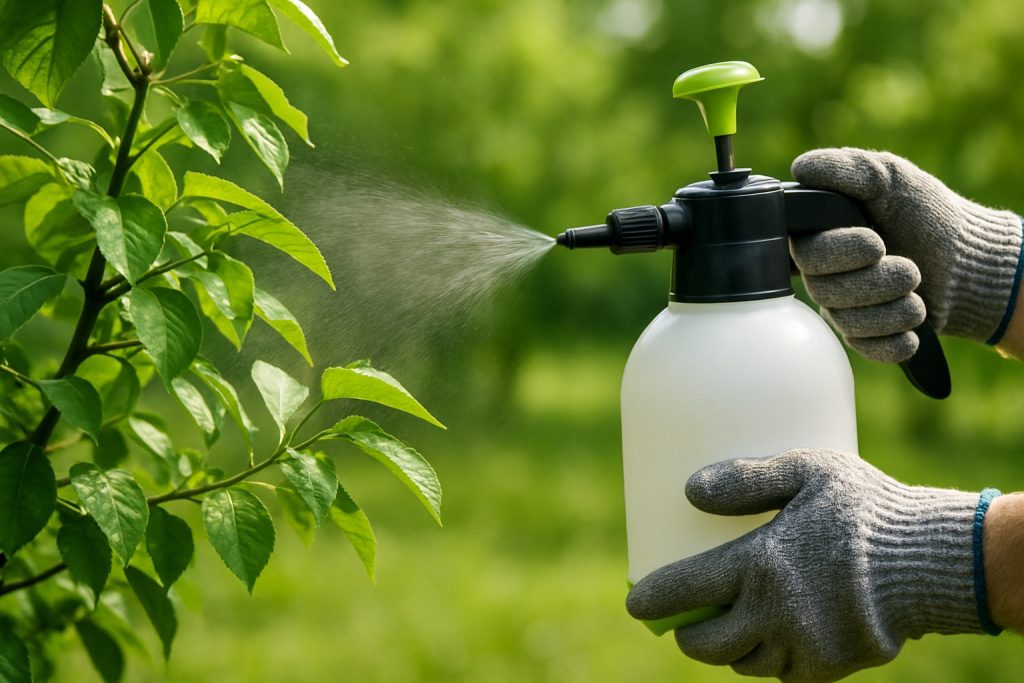Tree disease doesn’t wait. Neither should you.
In New Castle, DE, where tree-lined neighborhoods blend with history-rich landscapes, a single diseased tree can jeopardize more than just your curb appeal—it can threaten the health of your entire property. If you’ve spotted wilting leaves in spring, unexplained bark peeling, or unusual insect activity, these aren’t seasonal quirks. They’re signs of deeper problems that can spread silently and swiftly. Tree disease is aggressive by nature—but so are we in our approach to treating it. Whether it’s a cherished oak standing sentry over your backyard or a delicate ornamental adding charm to your front walk, our treatment plans don’t guess—they diagnose, target, and revive with precision.
Tree health in the mid-Atlantic: a silent battleground
New Castle’s climate brings beauty in all four seasons, but with it comes a mix of environmental stressors that make trees in the region particularly vulnerable. High humidity and sudden temperature shifts create an ideal breeding ground for fungal pathogens. Saturated soils along the Delaware River can suffocate roots. Urban stress—from compacted earth, poor drainage, and proximity to roadways—only adds fuel to the fire. These conditions are subtle in isolation but dangerous in combination, especially for trees without a structured defense strategy. Many diseases, such as verticillium wilt or anthracnose, begin invisibly—under the bark, deep in the root system—making expert intervention not just helpful, but necessary.
What to look for before it’s too late
Healthy trees in New Castle should display consistent seasonal growth, firm bark, and vibrant leaf coloration. If you notice blackened leaf tips, early leaf drop, powdery mildew, or patches of dead bark, you may be looking at symptoms of a systemic issue. Root rot, for example, often reveals itself through thinning canopies long before anything is visible at ground level. Similarly, bacterial infections like fire blight can spread between trees by wind or insects, compounding the risk across your entire landscape. Early identification is crucial, but self-diagnosis is often unreliable. That’s why we rely on professional-grade diagnostics tailored to both native and ornamental species found in Delaware yards.
Our holistic process: more than a spray and go
We begin with an in-depth, species-specific health assessment, evaluating not only the visible symptoms but also site-specific stressors. Soil composition, moisture retention, shade patterns, and root depth are all reviewed to provide context. Once we identify the root cause—be it fungal spores, insect-borne pathogens, or abiotic factors like construction damage—we create a custom treatment plan. That might include targeted trunk injections, soil amendments, pruning to improve airflow, or applications of biologically active agents that restore the tree’s own immune responses. Every solution is chosen with long-term sustainability in mind, balancing efficacy with environmental care.
Tips to protect your trees year-round in New Castle
Prevention doesn’t begin with treatment—it starts with knowledge. Mulching correctly (not too close to the trunk), watering during drought spells without over-saturating, and routine pruning are three foundational habits that dramatically reduce disease vulnerability. For homeowners along the coastal plain, avoiding over-fertilization is especially important, as high nitrogen levels can weaken natural defenses. It’s also wise to plant disease-resistant varieties if you’re adding new trees, and to inspect existing ones after storms for signs of damage or fungal intrusion. Finally, don’t ignore small changes—a single limb that loses leaves out of season may be your early warning system.
Why professional tree care matters more here
New Castle’s tree population includes a wide range of species—from mature maples shading colonial homes to Bradford pears dotting suburban lawns. Each type has its own immune profile and vulnerabilities. Moreover, the town’s proximity to major roadways, fluctuating water tables, and legacy construction sites can create soil environments that stress trees in hidden ways. A generalized treatment won’t address these complexities. What’s needed is a surgical, science-driven response—one that restores balance without collateral damage.
A healthier canopy begins with a single call
Every day you wait gives disease the chance to spread. What may appear to be cosmetic damage can swiftly evolve into structural failure or irreversible rot. Let us restore the integrity of your landscape with care rooted in knowledge, technique, and accountability. If you’re ready to protect the trees that define your property—and by extension, the beauty of New Castle itself—reach out now. A consultation today could prevent removal tomorrow. Call to speak with a specialist or use our secure web form to request your customized treatment plan. Availability is limited as our schedule fills quickly, so act today to reserve your preferred date and start the path to recovery.


